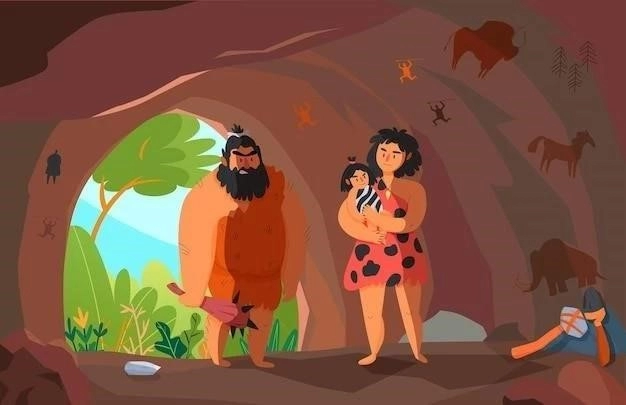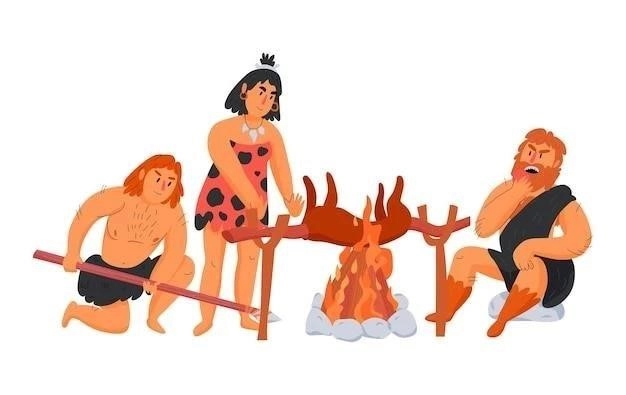The story of human evolution is a captivating tale‚ a journey spanning millions of years‚ marked by remarkable adaptations and fascinating discoveries. It’s a chronicle etched in our genes‚ bones‚ and the very tools our ancestors left behind. This journey‚ while still being pieced together‚ unveils the awe-inspiring path that led to our species‚ Homo sapiens.
Our Place in the Tree of Life
To understand our evolutionary history‚ we begin with our place in the biological order. Humans belong to the order Primates‚ a diverse group that includes monkeys‚ apes‚ and prosimians. Within this order‚ we are members of the family Hominidae‚ the Great Apes. This family encompasses chimpanzees‚ gorillas‚ orangutans‚ and humans.

A Fork in the Road: The Hominin Lineage
Around 6-7 million years ago‚ a crucial divergence occurred within the hominoid lineage. A population of African apes embarked on a unique evolutionary trajectory‚ splitting from the ancestors of chimpanzees and bonobos. These pioneers were the earliest hominins—species more closely related to humans than to any other living ape.
Key Adaptations: Walking Tall and Tool Use
Early hominins faced a changing environment. Denser forests gave way to more open grasslands‚ demanding new adaptations for survival. Two pivotal changes emerged:
- Bipedalism: Walking upright on two legs became a defining characteristic of hominins. This adaptation provided advantages for navigating open terrain‚ carrying food and infants‚ and seeing over tall grasses.
- Tool Use: Evidence suggests early hominins began using simple tools‚ likely for scavenging meat and accessing bone marrow. This marked a significant step in cognitive development and resource utilization.
The March of the Hominins: A Diverse Family Tree
The hominin lineage was not a linear progression to modern humans. Instead‚ it involved numerous branches and dead ends‚ with multiple species co-existing at various points in time. Here are some key players:
- Ardipithecus ramidus (4.4 million years ago): This species displayed a mosaic of ape-like and hominin-like traits‚ suggesting a very early stage of bipedalism.
- Australopithecus afarensis (3.9-2.9 million years ago): Famous for the “Lucy” skeleton‚ this species exhibited more refined bipedalism‚ but still possessed a relatively small braincase.
- Paranthropus boisei (2.3-1.2 million years ago): This lineage‚ known as the “robust” australopithecines‚ developed powerful jaws and teeth‚ likely for a diet of tough plant matter. They represent a side branch that eventually died out.
- Homo habilis (2.4-1.6 million years ago): This species‚ one of the earliest members of our genus‚ Homo‚ is associated with the first stone tools and a slightly larger brain size.
- Homo erectus (1.8 million-117‚000 years ago): This remarkably successful species exhibited a significantly larger brain‚ controlled fire‚ and migrated out of Africa‚ spreading into Asia and parts of Europe.
- Homo neanderthalensis (400‚000-40‚000 years ago): Our closest extinct relatives‚ Neanderthals were adapted to colder climates‚ possessed sophisticated tools‚ and exhibited evidence of symbolic thought and burial practices.
- Homo sapiens (300‚000 years ago-present): Our species emerged in Africa‚ characterized by a complex culture‚ advanced toolmaking‚ and remarkable cognitive abilities. We eventually spread across the globe‚ outcompeting or interbreeding with other hominin populations.

Unraveling the Past: The Role of Fossil Evidence
Our understanding of human evolution is constantly evolving‚ driven by new fossil discoveries and advancements in dating techniques. Paleontologists‚ anthropologists‚ and geneticists work tirelessly to piece together the puzzle of our past.
Fossils—the preserved remains or impressions of ancient organisms—provide invaluable clues. Skulls reveal brain size and facial features‚ while skeletal structures shed light on locomotion and posture. Teeth offer insights into diet‚ and tools indicate technological capabilities.
The Genetic Revolution: Unlocking Secrets in Our DNA
The study of ancient DNA‚ extracted from fossilized bones‚ has revolutionized our understanding of human evolution. By comparing the genomes of different hominin species‚ we can trace migration patterns‚ interbreeding events‚ and the genetic roots of our own species.

The Journey Continues
The quest to understand our origins is far from over. New discoveries continue to refine our knowledge and challenge existing theories. The story of human evolution is a testament to the power of scientific inquiry and the enduring fascination with our place in the grand tapestry of life.










